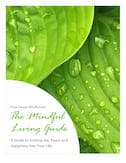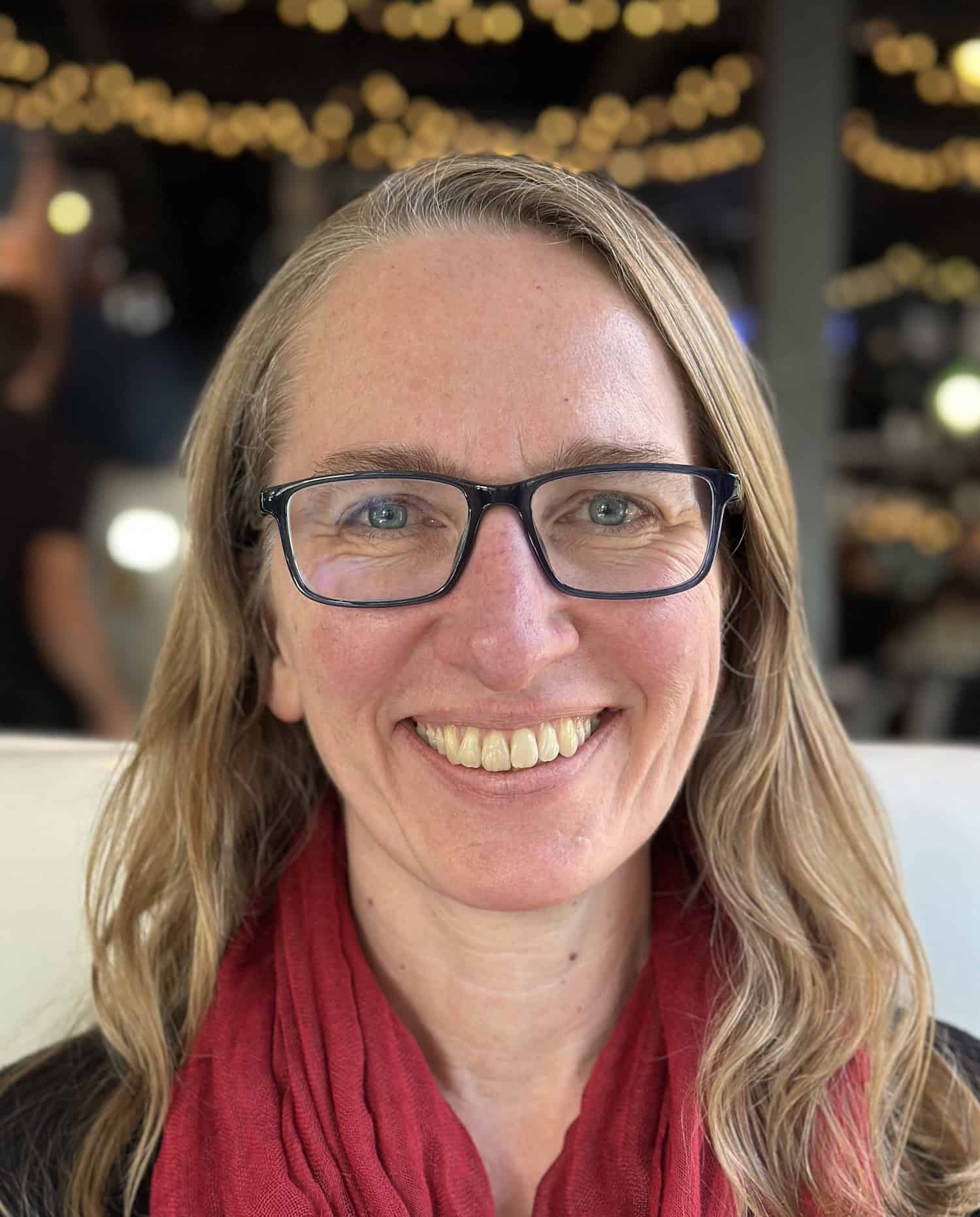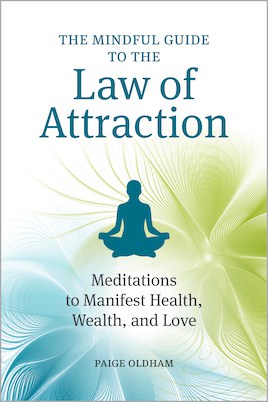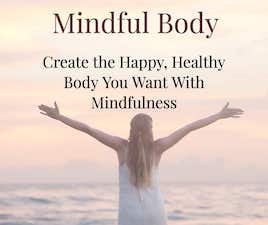What if there was a way to save money without feeling like you’re missing out? To feel great about every dollar you spend, knowing that it’s contributing to your overall happiness and long-term financial health?
It seems that saving is analogous to deprivation. You can’t save unless you’re depriving yourself of something you enjoy. And you’re supposed to feel bad when you do spend money unless it’s for the most basic of essentials.
Who wants to spend their life this way? I certainly don’t. Which is probably why I’ve been so bad at following personal budgets.
In a previous post, I mentioned the Happiness Exchange Rate that Bryan Franklin and Michael Ellsberg wrote about in The Last Safe Investment. It’s the happiness you derive from every dollar you spend or invest. “Any time or money you spend that allows you to derive more happiness for less money and effort in the future is an investment in your Happiness Exchange Rate. The payoff, in terms of increased happiness (internal wealth) and decreased expenses (external wealth), can be dramatic.”
This is the essence of mindfulness as it applies to money.
First, remember that nothing outside of you can ever make you truly happy. Yes, that new toy or gadget can give you a quick fix, but it won’t last. You’ll be looking for your next fix soon thereafter.
It’s All About Choices
Being happy is a choice, regardless of your circumstances. I don’t mean that kind of giddy, smiling all the time happy. I mean happy in your heart. Happy with yourself. Happy with whatever is.
The last of human freedoms – the ability to choose one’s attitude in a given set of circumstances.
When we are no longer able to change a situation, we are challenged to change ourselves. ~Viktor E. Frankl
Mindfully spending your time and money means pausing to consider the impact of each expenditure on you, your life and the lives and environments of those around you.
For example, our family chooses to spend more money on our food than the average family. Considering the impact that our food choices have on our taste buds, our short and long-term health, our family time together cooking, the people that handle the food, the health of the plants, animals, and soil where the food was grown and the global environment, we want an overall positive impact.
Choosing conventionally grown processed foods is certainly cheaper to the wallet but doesn’t make a positive impact on any of the areas I mentioned above. And those areas matter deeply to us.
When we know that the latest gadget isn’t going to help our overall happiness or get us closer to our intentions in life, it’s easy to choose to spend more on food and less on gadgets. It’s not a sacrifice.
The Touchy Feely Side of Money
When considering how you spend your time and money, pause to consider how you feel about the expenditure. Is it helping, hurting or neutral? Is it retail therapy to keep you from facing something difficult inside you?
Those difficult feelings won’t go away until you accept them and work with them. Retail therapy can get pretty expensive with no end in sight while actual therapy may seem expensive at first, but it has an end, and its benefits impact your whole life.
Just like using mindfulness to lose weight, you can use mindfulness to spend less.
When you pause to notice why you’re spending and how that particular expenditure makes you feel, you have the opportunity to change old habits and make new choices.
If you always get a big latte and cinnamon roll on your way to work, after a while it becomes a habit and you stop thinking about whether or not you even want them. You just buy them and consume them while you’re thinking about other things.
Not only are you consuming hundreds of empty calories, but you’re also spending money on things that aren’t adding to your overall happiness or health. Like lots of tasty treats, the happiness generated from the first bite or two is gone by the third or fourth bite.
Pause to think about what you could do differently and what effect you’re looking for.
If you need the caffeine and sugar to wake up, consider going to bed earlier to get more sleep or exercising in the morning to get your blood pumping. Both will give you more energy without the ensuing sugar crash later in the morning and the slow weight gain and neither cost any money.
Spend less while increasing happiness.
How You Buy Is As Important As What You Buy
Over the last couple of decades, the average savings rate in America was negative. That means that people were going into debt faster than they were saving. Fortunately, that trend has started to change, but not by much.
It’s so easy to put all those little purchases on a credit card. They don’t seem like much individually. But you experience sticker shock when you get the statement at the end of the month and see how quickly they add up.
When I was in college and received credit card offers, I accepted almost all of them. I thought that if the credit card company was going to take a chance on a young kid like me, I’d take them up on it. Unfortunately, like most teenagers, I had received no education on how to manage my money, especially credit. I had no idea that you could find a free tax calculator online, for example.
This resulted in me graduating college with over $14,000 of credit card debt, on top of my student loans. I didn’t even realize the damage was so bad through most of college because I had little balances spread across many cards. It wasn’t until a friend asked how much I owed that I took the time to add up all the balances. It astounded me.
For many years, it seemed a near impossibility to pay them all off. I always felt the heavy weight on my shoulders of all that debt. I would come up with all kinds of creative plans to pay everything off, only to open new accounts that I would “only use for this one purchase.” Then I would slide down the slippery slope again.
This cycle continued for many years until I received a windfall that allowed me to pay off almost all of my balances. I cut up all the cards and vowed to go cash-only from that point forward.
It was scary as hell because I had been living on credit for most of my life. But each week I stuck with it. Each month passed and my income was finally more than my expenses.
Many years have passed since then and I’ve never felt better. The constant weight on my shoulders is gone. I take a good, long time to consider buying something new.
I’ve realized that I just don’t need much to be happy. Mindfulness has helped me with that immensely.
In an email from Matt Valentine who writes at Buddhaimonia.com (an awesome mindfulness blog), he shared that he could live in a hut in the forest if it were up to him. I feel the same way. I actually have lived in tents in the rainforest of Costa Rica and the mountains outside of Jackson Hole, Wyoming for a while, and it was heaven.
Simple Steps
Understanding the source of your happiness and making mindful choices from that knowledge can grow your happiness and your savings at the same time.
The next time you plan to spend your time or money on something:
1. Pause. Many times what you’re about to do or spend money on is a habit that you no longer think about.
2. Take three deep breaths.
3. How will this investment of your time or money affect the following areas of your life? The more areas it beneficially affects, the higher the Happiness Exchange Rate.
Health: nutrition, fitness, sleep
Relationships: sex, love/romance/community of friends & family
Money: income, net worth, career
Culture: art/entertainment, travel/leisure, home/environment
Purpose: legacy, contribution to others, spirituality
Capability to provide value: creativity, influence, knowledge
4. Is this something you could live without?
5. Can you make this investment differently in order to add to your long term happiness?
6. Can you share the investment with someone to lower the cost and spread more happiness?
7. From what you’ve learned from the above steps, make a new choice.
8. Experiment and notice what you learn.
9. Use what you learn the next time you have an opportunity to invest in yourself.
I would love to hear how you apply this in your life. Please leave a comment about how you applied mindfulness to your spending and what the results were. Happy investing!
Create the life you want: Combine the law of attraction with mindfulness
The law of attraction suggests that our positive or negative thoughts bring about positive or negative experiences. My latest book, The Mindful Guide to Law of Attraction, pairs that belief with the powerful practices of mindfulness. Through intentional breathing, writing, and engaging, you’ll hone a method for manifesting health, wealth, and love―the elements of happiness.
Let the law of attraction work for you by adopting its basic steps of identifying and visualizing the things you desire. Then use 45 practical meditation techniques included in the book to achieve awareness. By concentrating your positive energy on obtaining your wants, you’ll give yourself permission to receive them.
To your happiness! ~Paige

You can find this book at Amazon, Barnes & Noble, Books-A-Million, and Indigo.






 The Mindful Living Guide
The Mindful Living Guide




this post is a valuable resource for anyone looking to take control of their financial future and live life on their own terms.
Hi. I am in need of serious help in regard to my food (restaurant/ delivery) spending. I seem to have tried everything and inevitably lose control putting these expenses on credit cards. It’s beyond ridiculous. Otherwise, my spending isn’t too bad. After a simple Google search this article on mindful spending popped up. It’s certainly worth a try instead of all the “tricks” that I have tried. Changing my mindset to mindfulness. I am saving this website in my favorites to explore further. Thank you.
Rachael,
I’m glad you’ve found how mindfulness can help you. I completely understand the saga of trying all kinds of tips and tricks that ultimately don’t work. There’s the idea of freezing your credit card in a block of ice so you can’t use it. Before getting my finances under control, I memorized my credit card numbers to get around that trick and others.
Mindfulness introduces the “power of the pause.” Before making a purchase, pause for just a second (or more) to consider how your next action will make you feel and ask yourself if you want to feel those feelings. Use that pause to consider the longer term implications of your choices.
It takes practice but works in the long term when you stick with it. Don’t judge yourself negatively when you repeat your old patterns. They’re hard to break. Be compassionate with yourself and make a different choice the next time. Keep pausing and practicing and noticing what comes up for you during those times of choice.
Over time, you’ll notice how much your choices have changed.
This was a nice starting point for me. Thank you. I wrote the end of the article into my spending og to guide my spending.
What a great idea Mella! Thanks so much for sharing that!
It is nice that you have received a windfall to pay off your debt
:. But how about those of us work and struggle and when the light appears at the end of the tunnel, something happens to close off that light. How do we manage? If I sound angry it is because I am.How can
I see the forest and not just the trees?
Car,
I lived much of my life as you describe. Just when I thought I was getting ahead, something would happen to drag me backwards. I learned that I had to change how I saw and treated money. I have received windfalls twice before the final one where I paid everything off each time, only to repeat the whole cycle again, accruing more debt with each cycle.
Once I committed to never having debt again – no matter what – I began to spend differently, make choices differently and see my priorities differently. I’ve learned that true commitment to something can transform your life. When you truly commit, there’s no back door, there’s no “just this one time,” there are no out’s. You only follow the path you’ve committed yourself to. While that may seem difficult, I’ve learned that it’s much more difficult to walk on the fence than to choose a side. It makes all choices easier.
Whether your commitment is to no debt or saving a certain amount or whatever, that choice dictates how all of your other choices are made. That commitment is “the forest” and all the subsequent choices are the “trees.” What are you willing to commit to?
I really like the practical tips you give at the end of this Paige, and I think this is something that we would all benefit from. It’s so easy for money to just slip through your fingers like water, and to realise it’s all gone without knowing exactly where. I’ve recently started tracking my small purchases with an app, and that has definitely meant I am more mindful and conscious of what I’m spending.
Taking the time to record what you spend, along with taking a picture of everything you eat, are wonderful mindfulness techniques that help you to be in the present and notice what you’re doing. And since these techniques give you a record of what you’ve done, they also help you to reflect on your choices.
Great ideas Ellen!
Love the idea of mindfulness around spending Paige. I’ve most definitely reach a point in life where I have much less desire to spend on ‘stuff’ and a lot more desire to spend making memories. Sometimes that can cost very little in terms of cash! 🙂
I’ve come to the same conclusion, Elle. I can see the shift in people spending on experiences vs. stuff as well. Those experiences will live in your memory for a long time while ‘things’ are more likely to disappear physically and in our memories.
While my kids may ask for lots of “stuff,” they also tell my husband and me (and show in their actions) that they definitely prefer time with us over stuff any day.